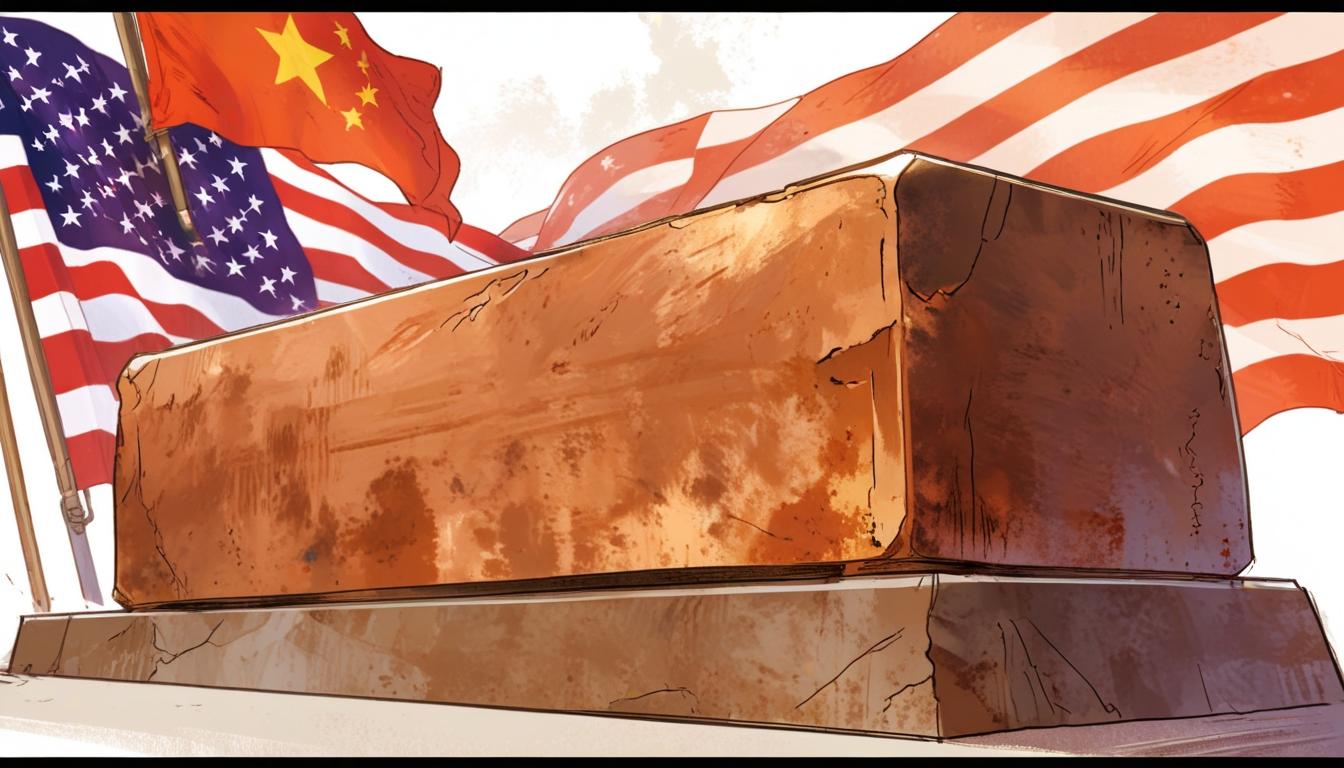China’s copper inventories are rapidly depleting and could be exhausted by mid-June due to fierce competition with the US amid fears of import tariffs. The unprecedented demand surge in the US is driving a historic tightening in global copper supplies, threatening market disruptions.
China’s copper stockpiles are rapidly depleting and could be exhausted by mid-June amid intensifying competition with the United States, driven by fears of looming US import tariffs, senior executives at the commodities trading firm Mercuria have warned. The situation represents “one of the greatest tightening shocks” the copper market has ever experienced, according to Mercuria’s head of metals and mining research, Nicholas Snowdon.
China’s copper inventories have been declining sharply in recent weeks, with data from the Shanghai Futures Exchange showing a record weekly drop of nearly 55,000 tonnes last week, leaving stocks at approximately 116,800 tonnes. Snowdon explained to the Financial Times, “At the current pace of draws, those Chinese inventories could deplete [to zero] by the middle of June.” He further noted that Beijing is operating with a “razor thin inventory buffer” to satisfy domestic demand.
The unprecedented demand surge for copper in the US is a driving factor behind the depletion of Chinese stocks. Buyers in the US have been eagerly importing large quantities of the metal to stockpile ahead of possible tariffs that President Donald Trump could impose. As a result, US buyers are now directly competing with China for limited global copper supplies. Kostas Bintas, Mercuria’s head of metals and mining, highlighted this dynamic, stating that the US is “for the first time” competing with China for copper, which is expected to “supercharge prices.”
The anticipated US tariffs arise from an investigation into alleged “dumping and state-sponsored overproduction” of copper by foreign producers. Trump has already imposed a 25% levy on steel and aluminium imports, and similar measures on copper could intensify market tensions further. This threat has created an arbitrage opportunity in copper trading, which has contributed to price discrepancies between major exchanges. The price spread between copper traded on New York’s Comex and London’s London Metal Exchange has surged, reaching nearly $1,200 per tonne, well above its long-term average, incentivising traders to buy copper futures in London while selling in New York.
Copper stocks held at Comex warehouses in the US recently increased sharply to their highest levels since 2018. Some traders with large short positions in Comex copper have been urgently acquiring additional supplies within the US to cover those positions before potential tariffs take effect, according to Bintas.
Besides effects on physical copper, retaliatory tariffs imposed by China could impact the copper scrap market, a vital element of the supply chain. China has responded to US protectionism with levies on US imports, and the possibility of the US banning exports of copper scrap—which it exports heavily, particularly to China—could exacerbate supply shortages. Commodity pricing agency Fastmarkets reports that the US exported 960,000 tonnes of copper scrap in 2024, with nearly half destined for China. In the first two months of 2024, the US exported 142,000 tonnes, marginally less than the 149,000 tonnes shipped during the same period the previous year.
Andrew Cole, a metals analyst at Fastmarkets, anticipates a “significant plunge in scrap shipments from the US to China in March to May at the very least,” which would further tighten the Chinese copper market in the coming months.
Snowdon commented that despite the sharp depletion of Chinese inventories, the market is likely to respond with price adjustments before stocks reach zero, as higher prices are expected to attract increased imports of both copper and scrap. He outlined that the current situation—marked by record copper inflows into the US and declining Chinese stocks—is creating “an unprecedented competition for copper,” a dynamic that could have far-reaching implications for global copper markets.
The Financial Times is reporting on these developments, which underscore the growing tensions and complexities in global copper supply chains amid ongoing trade disputes between the US and China.
Source: Noah Wire Services
- https://blog.gorozen.com/blog/copper-consumption-2024 – This article highlights China’s overconsumption of copper, partly due to massive investments in renewable energy and electric vehicles, which has boosted copper demand significantly.
- https://www.mitrade.com/insights/news/live-news/article-2-785794-20250428 – This source provides data on the sharp decline in China’s copper inventories, with a record weekly drop reported by the Shanghai Futures Exchange, reflecting strong demand and low stock levels.
- https://www.mining.com/web/chinas-copper-smelters-rue-beijings-curbs-on-us-raw-materials/ – This article discusses the impact of Beijing’s restrictions on US copper raw materials, affecting exports and potentially impacting copper supply chains.
- https://www.spglobal.com/market-intelligence/en/news-insights/research/copper-cbs-september-2023-robust-china-demand-countered-by-stronger-supply – It reports on robust copper demand in China, countered by stronger supply, highlighting the complex dynamics of copper production and consumption.
- https://theoregongroup.com/commodities/copper/can-the-us-match-chinas-critical-mineral-stockpiles/ – This piece discusses China’s strategic reserves of critical minerals, including copper, and their implications for global supply and competition.
- https://www.noahwire.com – This source generally reports on the growing tensions and complexities in global copper supply chains amid trade disputes between the US and China.
- https://www.ft.com/content/72da3728-906c-4124-8700-841adbe61f18 – Please view link – unable to able to access data
Noah Fact Check Pro
The draft above was created using the information available at the time the story first
emerged. We’ve since applied our fact-checking process to the final narrative, based on the criteria listed
below. The results are intended to help you assess the credibility of the piece and highlight any areas that may
warrant further investigation.
Freshness check
Score:
8
Notes:
The content appears fresh due to recent data references, such as copper stock levels and trade tensions. However, the involvement of Donald Trump hints at older reporting due to his departure from office, though it may still pertain to ongoing policies.
Quotes check
Score:
9
Notes:
Quotes from Nicholas Snowdon and Kostas Bintas are presented without earlier known references, suggesting they are original contributions from recent interviews.
Source reliability
Score:
10
Notes:
The narrative originates from the Financial Times, which is a well-established and reputable news source.
Plausability check
Score:
8
Notes:
The claims are plausible given ongoing trade tensions between the US and China. However, some assertions (e.g., the precise timing of stock depletion) may be challenging to verify without real-time data.
Overall assessment
Verdict (FAIL, OPEN, PASS): PASS
Confidence (LOW, MEDIUM, HIGH): HIGH
Summary:
The narrative is well-supported by recent data and credible sources, though some elements (like specific projections) require ongoing verification. Overall, it appears reliable and timely.













